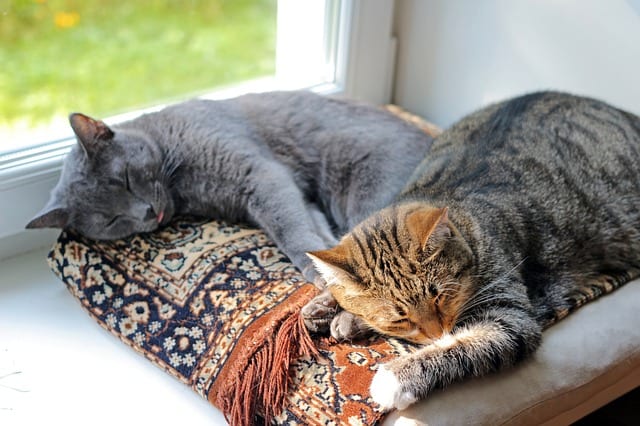For some of us, having just one cat isn’t enough. But a home where multiple cats live together can be tricky. Cats are naturally solitary animals, and some don’t like sharing their space with new felines.
So, when you want to get another cat, you will need to take into consideration the type of breed and its personality, as well as pay attention to the traits of the cat (or cats) you already own. So which cats coexist best and which breeds get along most easily?
What personalities do cats that live together more easily have?
The ones that coexist best with others are sociable, calm, non-territorial cats that adapt easily. Personality can depend more on the individual cat than on the breed, so the best option is to find a good organization or a good shelter and ask them for a cat that suits your situation. That said, there are certain cat breeds that coexist more easily with other cats than others.
Which breeds coexist most easily?

You should look for breeds that are known to be friendly to both other animals and people. Also, it would be a good idea to find a quiet breed that doesn’t mind not being at the top of the hierarchy anymore to avoid territorial disputes with the new feline.
Burmese, Persians, Ragdolls, British Shorthairs and Ragamuffins, are breeds famous for being naturally sweet and quiet; they also tend not to be aggressive towards other cats and not to react in case there is already a “boss”.
As for the Maine Coons , Norwegian Forest Cats, and Siberians, they tend to be confident and playful. They usually love other cats and welcome them as if they were new playmates. These, however, are fairly large types of cats, so they should be supervised while playing, especially if the newcomer is a kitten.
If we think of less common breeds, Abyssinians, Scottish Folds, Devon Rex, Isle of Man Cats and Sphynx are cats that get along well with others. The Devon Rex is extremely sociable, does not like to spend time alone, and is not selective about the people or animals that keep them company.
Isle of Man Cats have no tails, are highly intelligent, and have a beautiful personality: they are often described as dog-like.
The Scottish Fold breed is sweet and adapts very easily to different situations, as well as feeling at ease both with other animals and alone. And Abyssinians are considered to be the friendliest cats of all.
Which breeds are likely not to get along?

There are some breeds that are not recommended when they have to live together with other cats, especially if they live with cats of different breeds in the same house.
Siamese gets along well with other Siamese and Oriental, but are not very friendly to other types of cats, as they tend to take power and command. I once took home two Siamese who quickly took over, becoming bosses and bullying other cats. They seemed to know they were special and wanted to be treated as such: only they could hold me and prevent others from sitting on me, even when they didn’t actually want to be! To everyone’s surprise, the other cats unjustly stepped aside and obeyed.
I guess not all Siamese are like that, but they still tend to feel superior, so you have to be careful;

Bengal cats should also be wary of, as they are very unpredictable and some, despite being sociable, are a little too similar to their ancestors. A friend of mine was faced with a complicated situation when he brought home a Bengal cat, who soon became the boss, terrifying the cat who already lived in his house; eventually, this friend was forced to find a new home for the new feline.
So, in summary, Bengal cats are best kept in contact with animals of their own breed.
Other important points
Whichever breed you choose, there are simple rules to follow to get your cats to get along. They must be known slowly and without haste: this is the basic rule.
In general, keep the new cat in a room by itself, until the cat (or cats) that already lived in the house has become accustomed to the new smell. Then have the cats meet for short periods while you keep an eye on them, so you can separate them in case they don’t get along.
Be careful not to ignore signs of stress, such as growling or whistling, if they try to hide, if they pee out of the litter box, and if they don’t eat.
Make sure cats have different “resources”, such as food and water bowls, beds, and litter boxes. There must tend to be one more than the number of cats and they must be in different areas of the house; so that if the dominant cat guards the food or the litter box, there will be others free for the others. Also, try to create high spaces for non-dominant cats to hide in.
These tips are more important than the choice of the breed: cats, in fact, are individuals. First of all, try to be flexible, because all cats are different; some will become friends right away, others will take weeks or even months.


